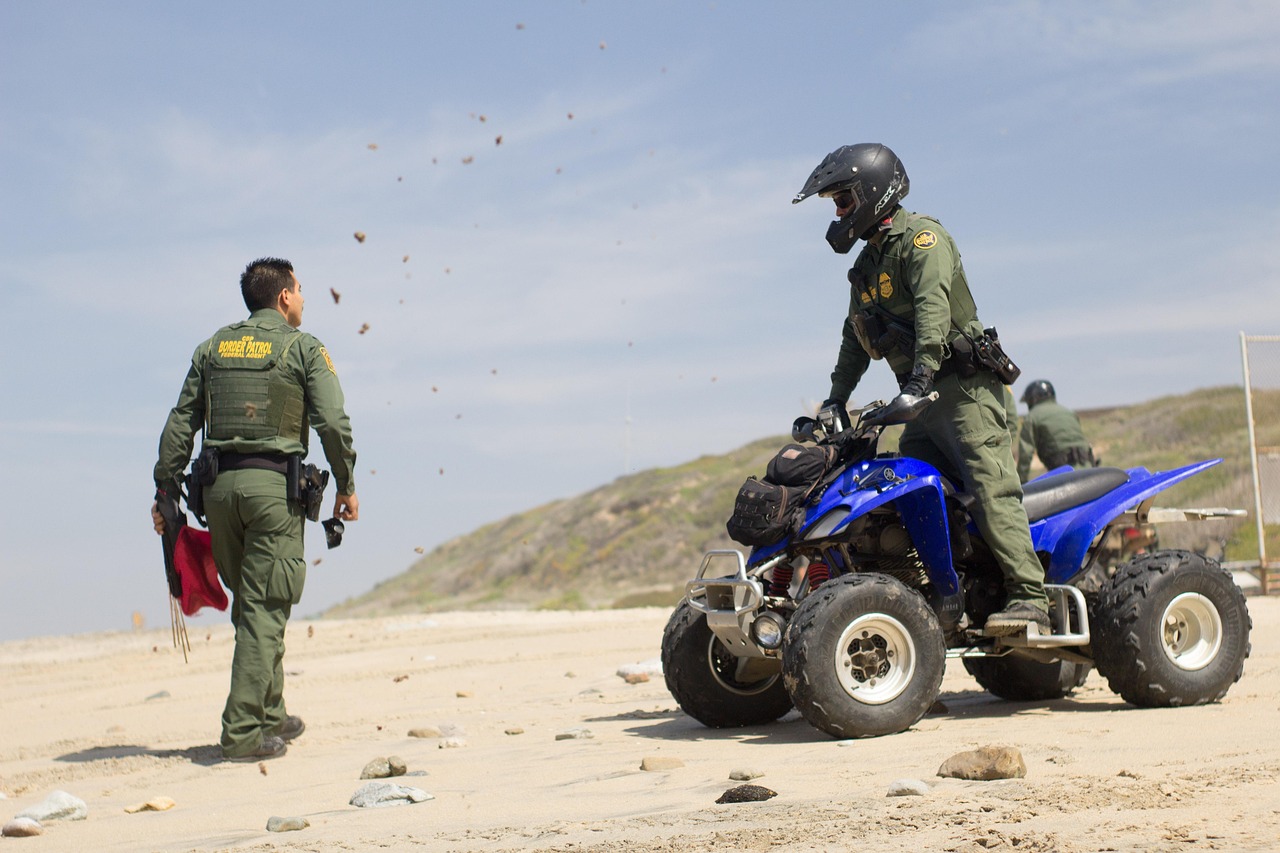Paw Patrol is a beloved children’s show that has captured the hearts of young audiences since its debut on Nickelodeon. This article delves into the show’s rich history, its evolution, and the profound impact it has had on children and parents alike.
The Creation of Paw Patrol
The origins of Paw Patrol can be traced back to its creator, Keith Chapman. His vision was to create a series that not only entertained but also educated preschool viewers. By incorporating engaging storytelling and relatable characters, the show was designed to resonate with young children and their families. The first episode aired in 2013, and it quickly became a staple in children’s programming.
The Characters of Paw Patrol
The show features a diverse cast of characters, each with unique traits and roles. The main character, Ryder, is a young boy who leads the team of six pups, each possessing specialized skills. This dynamic encourages themes of teamwork, problem-solving, and friendship, making it a fantastic educational tool for young viewers.
- Ryder: The Leader – Ryder embodies leadership qualities that inspire children to be proactive and responsible.
- The Pups: Unique Abilities – Each pup’s specialized skill set teaches children about various professions and community service.
Supporting Characters
In addition to the main characters, supporting roles such as Mayor Goodway and Cap’n Turbot enrich the narrative. Their interactions with the Paw Patrol team enhance the storylines and reinforce the show’s educational messages.
The Educational Value of Paw Patrol
Beyond mere entertainment, Paw Patrol serves an educational purpose. The show effectively incorporates lessons on teamwork, problem-solving, and social skills, making learning enjoyable for its young audience.
- Teachings on Teamwork – The importance of collaboration and communication among friends is a core theme.
- Problem-Solving Skills – The pups often face challenges that require creative solutions, encouraging critical thinking.
The Show’s Popularity and Cultural Impact
Since its launch, Paw Patrol has become a cultural phenomenon. Its popularity is evidenced by the extensive range of merchandise, including toys, clothing, and accessories. This merchandising success has significantly broadened the show’s reach and engagement with its audience.
Global Reach and Adaptations
The show’s success is not limited to North America; Paw Patrol has been adapted in various languages and cultures worldwide. These adaptations showcase how the series has been embraced internationally, often modifying storylines to resonate with local audiences.
The Future of Paw Patrol
As Paw Patrol continues to evolve, there are exciting possibilities for future developments. New characters and storylines are anticipated, aimed at adapting to changing audience preferences and educational needs. The show’s commitment to providing valuable lessons will likely remain at its core.
In summary, Paw Patrol has not only entertained but also educated countless children, making it a significant part of their formative years. Its engaging content, memorable characters, and positive messages ensure that it will remain a favorite for years to come.
Paw Patrol,
Paw Patrol is a beloved children’s television series that has captured the hearts of young audiences since its debut on Nickelodeon in 2013. This article explores the show’s history, its impact, and its ongoing popularity among children and parents alike.
The Creation of Paw Patrol
The origins of Paw Patrol can be traced back to its creator, Keith Chapman. His vision was to create a show that would engage preschool viewers through entertaining storytelling and relatable characters. The show was developed to incorporate themes of teamwork, community, and problem-solving, which resonate well with the developmental needs of young children.
The Characters of Paw Patrol
Paw Patrol features a diverse cast of characters, each with unique traits and roles. The main character, Ryder, is a young boy who leads the team of pups in various rescue missions. Each pup has its own specialized skill set, teaching children about different professions and the importance of community service.
- Ryder: The Leader – Ryder embodies leadership qualities, inspiring children to be proactive and responsible.
- The Pups: Unique Abilities – Each pup has a distinct skill, such as Chase’s police work and Marshall’s firefighting abilities.
Supporting Characters
Supporting characters like Mayor Goodway and Cap’n Turbot enhance the narrative and lesson themes of Paw Patrol. Their roles add depth to the story, showcasing the importance of community and collaboration.
The Educational Value of Paw Patrol
Paw Patrol is not just entertaining; it is also educational. The show incorporates lessons on teamwork, problem-solving, and social skills in a fun and engaging way for young viewers.
- Teachings on Teamwork – The show illustrates the importance of collaboration and communication among friends.
- Problem-Solving Skills – The adventures faced by the Paw Patrol pups often require creative problem-solving, encouraging critical thinking in young audiences.
The Show’s Popularity and Cultural Impact
Since its debut, Paw Patrol has become a cultural phenomenon. Its rise in popularity can be attributed to its engaging content and the extensive range of merchandise available, from toys to clothing.
- Merchandising Success – The show’s merchandise has significantly contributed to its popularity, enhancing its reach and engagement with its audience.
- Global Reach and Adaptations – Paw Patrol has expanded beyond North America, with adaptations in various languages and cultures, showcasing its international appeal.
The Future of Paw Patrol
As Paw Patrol continues to evolve, there are speculations about potential future developments, including new characters and storylines. The show may adapt to changing audience preferences and educational needs, ensuring its relevance in children’s media.
In conclusion, Paw Patrol has made a lasting impact on children’s television by combining entertainment with valuable life lessons. Its engaging characters and educational themes ensure that it will remain a favorite among young viewers for years to come.
detailing its creation, impact, and ongoing popularity among young audiences and parents alike.
Paw Patrol is a beloved children’s television series that has captured the hearts of young audiences and parents alike since its debut on Nickelodeon. This article delves into the show’s creation, impact, and ongoing popularity, highlighting why it remains a staple in children’s media.
The Creation of Paw Patrol
The origins of Paw Patrol can be traced back to its creator, Keith Chapman. Aimed at preschool viewers, the show was developed to engage children through storytelling and relatable characters. The concept revolves around a group of animated puppies led by a boy named Ryder, who works together with his team to solve problems and help their community.
The Characters of Paw Patrol
- Main Paw Patrol Characters: The main characters include Ryder and six unique pups, each with distinct skills that contribute to the show’s charm.
- Ryder: The Leader: Ryder embodies leadership qualities, inspiring children to be proactive and responsible.
- The Pups: Unique Abilities: Each pup has specialized skills that teach children about various professions and the importance of community service.
Supporting Characters
Supporting characters, such as Mayor Goodway and Cap’n Turbot, add depth to the narrative. Their roles enhance the lessons of teamwork and friendship, making the show more relatable and engaging for young viewers.
The Educational Value of Paw Patrol
Paw Patrol is not just entertaining; it is also educational. The show incorporates lessons on teamwork, problem-solving, and social skills in a fun way.
- Teachings on Teamwork: One of the core themes is teamwork. The show illustrates the importance of collaboration and communication among friends.
- Problem-Solving Skills: The adventures faced by the pups require creative problem-solving, encouraging critical thinking in young audiences.
The Show’s Popularity and Cultural Impact
Since its launch, Paw Patrol has become a cultural phenomenon. Its rise in popularity can be attributed to its engaging content and relatable characters.
- Merchandising Success: The extensive range of merchandise, from toys to clothing, has significantly contributed to the show’s popularity.
- Global Reach and Adaptations: Paw Patrol has expanded internationally, with adaptations in various languages, showcasing its universal appeal.
The Future of Paw Patrol
As Paw Patrol continues to evolve, potential future developments may include new characters and storylines that adapt to changing audience preferences and educational needs. The show’s ability to innovate while maintaining its core values will ensure its relevance in children’s media for years to come.
The Creation of Paw Patrol
Paw Patrol is a beloved animated series that has captured the hearts of children and parents alike since its debut. Created by Keith Chapman, this show was designed with a clear vision: to provide preschoolers with engaging stories that promote teamwork, problem-solving, and positive social interactions. The journey of Paw Patrol began in 2013, and since then, it has evolved into a cultural phenomenon.
The origins of Paw Patrol can be traced back to the creative mind of Keith Chapman, who sought to develop a show that would resonate with young audiences. His inspiration stemmed from a desire to create relatable characters that children could look up to and learn from. Each episode is carefully crafted to blend entertainment with educational elements, ensuring that children not only enjoy the adventures of the Paw Patrol team but also gain valuable life lessons.
The show’s development was a collaborative effort involving a talented team of writers, animators, and educators. They worked together to create a cast of characters that reflect diversity and inclusivity, making it easier for children from various backgrounds to identify with the show. The characters are designed to embody positive traits such as bravery, kindness, and resourcefulness, which are essential for young viewers to emulate.
Each episode of Paw Patrol features a unique storyline that revolves around the team solving problems or helping those in need. The character of Ryder, a young boy who leads the team of pups, exemplifies leadership and responsibility, encouraging children to take initiative in their own lives. The six pups, each with their distinct skills—such as Chase the police pup, Marshall the firefighter, and Skye the aviator—demonstrate the importance of teamwork and collaboration.
- Chase: The police pup who emphasizes the importance of law and order.
- Marshall: The firefighter who teaches children about safety and bravery.
- Skye: The aviator who inspires adventure and exploration.
- Rubble: The construction pup who highlights teamwork in building and fixing.
- Zuma: The water rescue pup who promotes environmental awareness.
- Rocky: The recycling pup who teaches the value of sustainability.
Through these characters, Paw Patrol not only entertains but also educates children about different professions and the significance of community service. The show’s format encourages children to think critically and work collaboratively, which are essential skills in their formative years.
The impact of Paw Patrol on its young audience cannot be overstated. The show has successfully created a safe and imaginative space for children to learn about friendship, empathy, and problem-solving. By presenting challenges that the pups must overcome, the series encourages children to engage in critical thinking and develop their own solutions to problems.
Furthermore, the show has fostered a sense of community among its viewers. Children often discuss their favorite episodes and characters, sharing lessons learned and how they can apply them in real life. This engagement extends beyond the screen, as parents often use the themes presented in Paw Patrol as conversation starters with their children, reinforcing the educational aspects of the show.
In conclusion, the creation of Paw Patrol marked a significant milestone in children’s programming. By combining entertaining narratives with valuable life lessons, the show not only captivates its audience but also plays a crucial role in their development. The thoughtful design of characters and storylines continues to resonate with children, making Paw Patrol a staple in the world of children’s television.
Paw Patrol,
Paw Patrol is a beloved children’s television show that has captured the hearts of young audiences worldwide. Since its debut on Nickelodeon, it has become a cultural phenomenon, blending entertainment with valuable life lessons. This article delves into the show’s history, character dynamics, educational impact, and its ongoing popularity.
The Creation of Paw Patrol
The origins of Paw Patrol trace back to its creator, Keith Chapman. His vision was to create a series that would engage preschool viewers through compelling storytelling and relatable characters. The show first aired in 2013 and quickly gained traction due to its unique premise: a group of animated puppies led by a boy named Ryder, who undertakes various rescue missions.
The Characters of Paw Patrol
The diverse cast of characters in Paw Patrol plays a crucial role in its success. Each character has unique traits and skills, promoting positive messages about teamwork, problem-solving, and friendship.
- Main Paw Patrol Characters
- Ryder: The young leader who embodies responsibility and proactivity.
- Chase: A German Shepherd who serves as a police pup.
- Marshall: The fire pup known for his clumsiness and bravery.
- Skye: The aviator pup who teaches children about aviation.
- Rocky: The recycling pup who promotes environmental awareness.
- Zuma: The water rescue pup who highlights the importance of water safety.
Supporting Characters
Supporting characters like Mayor Goodway and Cap’n Turbot add depth to the narrative, enhancing the show’s themes and providing additional lessons for young viewers.
The Educational Value of Paw Patrol
Paw Patrol is not merely a source of entertainment; it also serves an educational purpose. The show incorporates lessons on teamwork, problem-solving, and social skills in an engaging manner.
- Teachings on Teamwork
One of the core themes of Paw Patrol is the significance of collaboration. The adventures often require the pups to work together, showcasing the importance of communication and cooperation among friends.
- Problem-Solving Skills
The challenges faced by the Paw Patrol pups encourage creative problem-solving. Each episode presents scenarios that stimulate critical thinking, teaching children how to approach obstacles with a solution-oriented mindset.
The Show’s Popularity and Cultural Impact
Since its inception, Paw Patrol has achieved remarkable popularity, becoming a staple in children’s media. The show’s success has led to a significant merchandising boom, with toys, clothing, and other products that further engage its audience.
- Merchandising Success
The extensive range of Paw Patrol merchandise has played a vital role in the show’s popularity. From action figures to themed apparel, these products have allowed children to connect with their favorite characters beyond the screen.
- Global Reach and Adaptations
Paw Patrol has expanded its reach beyond North America, with adaptations in various languages and cultures. This global approach has allowed the show to resonate with diverse audiences, adapting its themes to local contexts.
The Future of Paw Patrol
As Paw Patrol continues to evolve, there are exciting prospects for future developments. New characters, storylines, and educational themes are likely to emerge, ensuring that the show remains relevant and engaging for its young audience.
including the vision of its creator, Keith Chapman, and how the show was developed to appeal to preschool viewers through engaging storytelling and relatable characters.
Paw Patrol is a beloved children’s television series that has captured the hearts of young audiences since its debut. Created by Keith Chapman, the show was designed with a clear vision: to engage preschool viewers through captivating storytelling and relatable characters. This article delves into the show’s history, its impact, and its ongoing popularity among children and parents alike.
The Creation of Paw Patrol
The journey of Paw Patrol began with Keith Chapman, who aimed to create a show that not only entertained children but also imparted valuable life lessons. The concept revolved around a group of rescue dogs led by a boy named Ryder, who work together to protect their community. This engaging premise was developed to appeal specifically to preschool-aged children, utilizing colorful animation, fun adventures, and relatable scenarios.
The Characters of Paw Patrol
One of the key elements that contribute to the show’s success is its diverse cast of characters. Each pup has unique traits and skills, allowing children to see themselves in these characters. The show emphasizes themes of teamwork, problem-solving, and friendship, making it both entertaining and educational.
- Main Paw Patrol Characters
- Ryder: The proactive leader who embodies qualities of responsibility and leadership.
- Chase: The police pup who teaches about safety and law enforcement.
- Marshall: The firefighter pup who represents bravery and emergency response.
- Skye: The aviator pup promoting adventure and exploration.
- Rocky: The recycling pup who advocates for environmental awareness.
- Zuma: The water rescue pup emphasizing aquatic safety.
Each character’s unique abilities are designed to teach children about various professions and the importance of community service, enhancing the educational value of the show.
The Educational Value of Paw Patrol
Paw Patrol is not merely a source of entertainment; it serves as an educational tool. The show incorporates lessons on teamwork, problem-solving, and social skills in a fun and engaging manner. For instance, the pups frequently face challenges that require them to collaborate and communicate effectively, teaching young viewers the importance of working together.
- Teachings on Teamwork: The show illustrates how friends can achieve more by working together, emphasizing the significance of collaboration.
- Problem-Solving Skills: Each episode presents scenarios that require creative solutions, encouraging critical thinking among young audiences.
The Show’s Popularity and Cultural Impact
Since its premiere, Paw Patrol has evolved into a cultural phenomenon. The show’s rise in popularity can be attributed to its engaging content and relatable characters. Furthermore, its extensive range of merchandise, including toys, clothing, and educational materials, has significantly contributed to its success.
- Merchandising Success: The wide array of Paw Patrol products has allowed children to connect with their favorite characters beyond the screen, fostering a deeper engagement with the brand.
- Global Reach and Adaptations: The show has been adapted into various languages and cultures, showcasing its universal appeal. This section examines how the series has been received internationally and how it adapts to local contexts.
The Future of Paw Patrol
As Paw Patrol continues to evolve, there is much speculation about potential future developments. New characters, storylines, and themes may emerge, allowing the show to adapt to changing audience preferences and educational needs.
In summary, Paw Patrol remains a significant part of children’s media, successfully blending entertainment with valuable life lessons. Its unique characters, educational content, and cultural impact ensure its place in the hearts of young viewers and their families for years to come.
The Characters of Paw Patrol
Paw Patrol is renowned not only for its engaging stories but also for its diverse cast of characters who each bring unique qualities to the show. This section delves into the characters that make up the Paw Patrol team, highlighting their distinctive traits, roles, and the important lessons they impart to young viewers.
| Character | Role | Unique Traits |
|---|---|---|
| Ryder | Leader | Resourceful, brave, and responsible |
| Chase | Police pup | Smart, loyal, and a natural leader |
| Marshall | Firefighter | Clumsy but kind-hearted and brave |
| Skye | Aviator | Fearless, adventurous, and clever |
| Rubble | Construction pup | Strong, playful, and loves to dig |
| Zuma | Water rescue pup | Laid-back, fun-loving, and a great swimmer |
| Everest | Snow rescue pup | Brave, adventurous, and loves the snow |
The main characters of Paw Patrol are not just adorable pups; they embody various skills and traits that resonate with children. Each pup is designed to teach kids about different professions and the importance of teamwork and community service. For instance, Chase represents law enforcement, teaching children about safety and responsibility, while Marshall showcases the bravery and quick thinking required in firefighting.
Additionally, the character of Ryder serves as a role model for young viewers. As the leader of the Paw Patrol, he exemplifies qualities such as leadership, problem-solving, and a commitment to helping others. His interactions with the pups foster a sense of camaraderie and teamwork, showcasing how collaboration can lead to successful outcomes.
Supporting characters like Mayor Goodway and Cap’n Turbot add depth to the narrative, providing context and challenges that the Paw Patrol must overcome. These characters help to illustrate the importance of community and collaboration, reinforcing the show’s educational themes.
In addition to their entertaining qualities, the characters in Paw Patrol convey essential life lessons. They demonstrate the value of friendship, kindness, and the importance of helping others in need. The adventures faced by the Paw Patrol not only entertain but also encourage children to think critically and develop problem-solving skills.
Overall, the diverse cast of characters in Paw Patrol plays a crucial role in the show’s success. By combining engaging storytelling with relatable characters, the series effectively imparts valuable lessons to its young audience, making it a beloved choice for both children and parents.
Paw Patrol,
Paw Patrol is a beloved children’s television series that has captured the hearts of young audiences since its debut on Nickelodeon in 2013. This article delves into the history and evolution of the show, examining its creation, impact, and ongoing popularity among children and parents alike.
The Creation of Paw Patrol
The origins of Paw Patrol can be traced back to its creator, Keith Chapman, who envisioned a show that would engage preschool viewers through captivating storytelling and relatable characters. The development process involved a focus on themes of friendship, teamwork, and community service, ensuring that the show would not only entertain but also educate its audience.
The Characters of Paw Patrol
The diverse cast of characters in Paw Patrol plays a crucial role in its success. Each character possesses unique traits and abilities that convey positive messages about teamwork and problem-solving. Below is a brief overview of the main characters:
| Character | Trait | Role |
|---|---|---|
| Ryder | Leader | Guides the team |
| Chase | Police pup | Law enforcement |
| Marshall | Firefighter | Fire rescue |
| Skye | Aviator | Air support |
| Rubble | Construction | Building and repair |
| Zuma | Water rescue | Water-related missions |
| Rocky | Recycling | Environmental support |
The Educational Value of Paw Patrol
Paw Patrol is not just a source of entertainment; it also serves an educational purpose. The show incorporates lessons on teamwork and problem-solving in a fun and engaging manner. One of the core themes is the importance of collaboration, as the pups often work together to overcome challenges. This segment highlights how the show illustrates the significance of communication among friends.
The adventures faced by the pups often require creative solutions, encouraging young viewers to develop critical thinking skills. By watching the pups tackle various problems, children learn to approach challenges with a positive attitude and a willingness to collaborate.
The Show’s Popularity and Cultural Impact
Since its premiere, Paw Patrol has become a cultural phenomenon. Its rise in popularity can be attributed to its relatable characters and engaging storylines. The extensive range of merchandise, from toys to clothing, has significantly contributed to its success, allowing children to interact with their favorite characters beyond the screen.
Furthermore, Paw Patrol has expanded its reach globally, with adaptations in various languages and cultures. This international success demonstrates the show’s ability to resonate with diverse audiences, making it a staple in children’s media worldwide.
The Future of Paw Patrol
As Paw Patrol continues to evolve, there are exciting possibilities for new characters and storylines. The creators are likely to adapt the show to meet changing audience preferences and educational needs, ensuring that it remains relevant and engaging for future generations.
highlighting their unique traits, roles, and the positive messages they convey about teamwork, problem-solving, and friendship.
Paw Patrol is a beloved children’s television series that has captured the hearts of audiences worldwide. Created by Keith Chapman, the show first aired on Nickelodeon in 2013 and has since evolved into a cultural phenomenon. With its engaging storytelling, relatable characters, and educational themes, Paw Patrol continues to entertain and educate young viewers while promoting positive values such as teamwork, problem-solving, and friendship.
The Creation of Paw Patrol
The origins of Paw Patrol can be traced back to the vision of its creator, Keith Chapman. He aimed to develop a show that would resonate with preschool audiences, blending adventure with valuable life lessons. The show features a diverse cast of characters, each designed to appeal to children while teaching essential skills.
The Characters of Paw Patrol
At the heart of Paw Patrol are its main characters, led by Ryder, a young boy who embodies leadership and responsibility. He leads a team of six pups, each with unique skills that contribute to their rescue missions. This diverse cast promotes the importance of teamwork and collaboration.
- Ryder: The proactive leader who inspires children to take initiative.
- Chase: A German Shepherd police pup who values order and safety.
- Marshall: A fun-loving Dalmatian firefighter who teaches bravery.
- Skye: A Cockapoo aviator who encourages exploration and adventure.
- Rocky: A mixed-breed pup who promotes recycling and resourcefulness.
- Zuma: A Labrador retriever who loves water rescue missions.
- Everest: A husky who teaches kids about winter safety and adventure.
The Educational Value of Paw Patrol
Paw Patrol is not just entertaining; it is also educational. The show incorporates valuable lessons on teamwork, problem-solving, and social skills in a fun and engaging manner.
- Teachings on Teamwork: The core theme of Paw Patrol is teamwork. Each episode demonstrates how the pups work together to overcome challenges, emphasizing the importance of collaboration and communication.
- Problem-Solving Skills: The adventures faced by the pups often require creative solutions. These scenarios encourage critical thinking and resourcefulness in young audiences.
The Show’s Popularity and Cultural Impact
Since its debut, Paw Patrol has become a cultural phenomenon. Its rise in popularity is evident not only in viewership but also in its extensive range of merchandise, including toys, clothing, and accessories. This merchandising success has significantly contributed to the show’s reach and engagement with its audience.
- Merchandising Success: The vast array of Paw Patrol products has allowed children to connect with their favorite characters beyond the screen, enhancing their overall experience.
- Global Reach and Adaptations: Paw Patrol has expanded beyond North America, with adaptations in various languages and cultures. The show has been well-received internationally, often adapting storylines to fit local contexts.
The Future of Paw Patrol
As Paw Patrol continues to evolve, the potential for new characters, storylines, and educational themes remains vast. The show is likely to adapt to changing audience preferences and educational needs, ensuring its relevance for future generations.
In summary, Paw Patrol stands out as a remarkable children’s series that not only entertains but also imparts essential life lessons. With its engaging characters and positive messages, it continues to be a favorite among young audiences and parents alike.

Main Paw Patrol Characters
Paw Patrol has captured the hearts of children and parents alike with its engaging stories and memorable characters. At the core of this beloved series are the main characters, each contributing their unique qualities to the team. In this section, we will delve into these characters, highlighting their individual traits and the positive messages they convey.
- Ryder: The Inspiring Leader
Ryder is the young boy who leads the Paw Patrol team. With his adventurous spirit and strong sense of responsibility, he embodies the qualities of a true leader. Ryder is always ready to take charge during missions, teaching children the importance of leadership and teamwork. His character encourages kids to be proactive and to help others in their community. - Chase: The Police Pup
Chase is a German Shepherd who serves as the team’s police pup. He is known for his keen sense of smell and his ability to track down trouble. Chase’s character teaches children about law enforcement and the importance of safety, showcasing how police officers help keep communities safe. - Marshall: The Firefighter Pup
Marshall is a Dalmatian who is the team’s firefighter and medic. His clumsiness often leads to humorous situations, but it also highlights the importance of bravery and quick thinking during emergencies. Marshall’s character helps children understand the role of firefighters and the significance of being prepared in emergencies. - Skye: The Aviator Pup
Skye is a Cockapoo and the team’s aviator. With her helicopter, she showcases the thrill of flying and adventure. Skye’s character encourages children to be fearless and to explore new heights, both literally and metaphorically. She represents the importance of pursuing one’s dreams and overcoming obstacles. - Rubble: The Construction Pup
Rubble is a bulldog who specializes in construction and heavy machinery. His strength and determination are essential for building and fixing things during missions. Rubble teaches children about construction and teamwork, emphasizing the value of hard work and collaboration. - Zuma: The Water Rescue Pup
Zuma is a Labrador retriever who is passionate about water rescues. His love for the water and his surfing skills make him a vital part of the team during aquatic missions. Zuma’s character highlights the importance of environmental awareness and safety around water, encouraging children to respect nature. - Everest: The Snow Rescue Pup
Everest is a Siberian Husky who specializes in snow rescues. Her character introduces children to the challenges of winter and the importance of helping others in all environments. Everest’s adventurous spirit encourages kids to embrace the outdoors and learn about different terrains.
Each character in Paw Patrol plays a crucial role in teaching valuable life lessons. They exemplify qualities such as teamwork, bravery, and responsibility, making the show not only entertaining but also educational. Through their adventures, children learn about various professions, the importance of community service, and how to face challenges with a positive attitude.
The dynamic interactions among the characters further enhance the show’s appeal. Their diverse personalities create a balance that resonates with young viewers, making them relatable and inspiring. By exploring the strengths and abilities of each pup, children are encouraged to recognize their own unique talents and the importance of working together to achieve common goals.
Paw Patrol,
Paw Patrol is a beloved children’s television series that has captured the hearts of young audiences since its debut on Nickelodeon. With its engaging storytelling and relatable characters, the show not only entertains but also educates children about teamwork, problem-solving, and community service. This article delves into the history and evolution of Paw Patrol, exploring its creation, characters, educational value, and cultural impact.
The Creation of Paw Patrol
The inception of Paw Patrol can be attributed to its creator, Keith Chapman, who envisioned a show that would resonate with preschool viewers. The series was developed to incorporate engaging narratives that would captivate young minds while imparting valuable life lessons. The show’s unique blend of adventure and education has made it a staple in children’s programming.
The Characters of Paw Patrol
At the heart of Paw Patrol is its diverse cast of characters, each with their own unique traits and abilities. The main characters, including Ryder and the six pups, work together to solve problems and help their community. This section highlights their roles and the positive messages they convey about teamwork and friendship.
- Ryder: The young boy who leads the Paw Patrol team, embodying leadership qualities that inspire children to be proactive and responsible.
- The Pups: Each pup has a specialized skill set, designed to teach children about various professions and the importance of community service.
Supporting Characters
Supporting characters like Mayor Goodway and Cap’n Turbot add depth to the show. Their roles enhance the narrative and reinforce the lesson themes present in Paw Patrol.
The Educational Value of Paw Patrol
Beyond entertainment, Paw Patrol serves an educational purpose. The series incorporates lessons on teamwork, problem-solving, and social skills, making learning fun for young viewers.
- Teachings on Teamwork: The show emphasizes the importance of collaboration and communication among friends, showcasing how working together can achieve great results.
- Problem-Solving Skills: The adventures faced by the Paw Patrol pups often require creative problem-solving, encouraging critical thinking in young audiences.
The Show’s Popularity and Cultural Impact
Since its launch, Paw Patrol has become a cultural phenomenon. This section analyzes its rise in popularity, the success of its merchandise, and its influence on children’s media.
- Merchandising Success: The extensive range of Paw Patrol merchandise, from toys to clothing, has significantly contributed to its popularity, expanding its reach and engagement with audiences.
- Global Reach and Adaptations: Paw Patrol has expanded beyond North America, with adaptations in various languages and cultures, showcasing its international appeal.
The Future of Paw Patrol
As Paw Patrol continues to evolve, there are speculations about potential future developments, including new characters and storylines. The show is likely to adapt to changing audience preferences and educational needs, ensuring its relevance for years to come.
In summary, Paw Patrol is more than just a children’s show; it is a multifaceted program that combines entertainment with education, instilling important values in young viewers. Its ongoing popularity and cultural impact signify its role as a beloved staple in children’s programming.
including Ryder and the six pups, each with their distinct skills and personalities that contribute to the show’s charm and educational value.
Paw Patrol is a widely loved children’s television show that has captured the hearts of young audiences since its debut on Nickelodeon. This article delves into the charming world of Paw Patrol, focusing on its main characters, particularly Ryder and the six adorable pups, each with unique skills and personalities that contribute to the show’s educational value and entertainment.
The Creation of Paw Patrol
The brainchild of creator Keith Chapman, Paw Patrol was developed to engage preschool viewers through captivating storytelling and relatable characters. The show’s premise revolves around a group of rescue dogs led by a boy named Ryder. Together, they embark on various adventures, teaching children valuable life lessons along the way.
Meet Ryder: The Leader
At the helm of the Paw Patrol team is Ryder, a resourceful and brave young boy. Ryder’s leadership qualities set a positive example for children, showcasing the importance of being proactive and responsible. He is not just a leader but also a friend to the pups, fostering a sense of teamwork and camaraderie.
The Six Pups: Unique Abilities
Each member of the Paw Patrol team has a distinct skill set, making them invaluable in different situations. Here’s a closer look at the six main pups:
- Chase – A German Shepherd who serves as a police pup, Chase is known for his keen sense of smell and ability to track down clues.
- Marshall – The fire pup, Marshall is a Dalmatian who brings humor and enthusiasm, along with his firefighting skills.
- Skye – The aviation expert, Skye is a Cockapoo who flies her helicopter to rescue those in need.
- Rubble – A construction bulldog, Rubble uses his strength and skills in building and repairing.
- Zuma – The water rescue pup, Zuma is a Labrador who excels in aquatic missions.
- Rocky – The recycling pup, Rocky teaches kids about environmental responsibility while using his skills to repurpose materials.
Together, these characters not only entertain but also impart lessons on teamwork, problem-solving, and friendship.
Educational Value of Paw Patrol
Beyond entertainment, Paw Patrol is rich in educational content. The show emphasizes key themes that resonate with young viewers, such as:
Teachings on Teamwork
The importance of teamwork is a core theme in Paw Patrol. Each episode illustrates how the pups collaborate to overcome challenges, highlighting the value of communication and cooperation among friends.
Problem-Solving Skills
The adventures faced by the pups often require creative problem-solving. Children watch as Ryder and the pups devise strategies to tackle various obstacles, encouraging critical thinking and resilience.
The Show’s Popularity and Cultural Impact
Since its inception, Paw Patrol has evolved into a cultural phenomenon. The show’s immense popularity is reflected in its extensive merchandise range, from toys to clothing. This merchandising success has not only boosted the show’s visibility but also deepened its connection with its audience.
Global Reach and Adaptations
The Future of Paw Patrol
As Paw Patrol continues to grow, fans can anticipate new characters and storylines that align with evolving educational needs and audience preferences. The show’s commitment to delivering meaningful content ensures its place in children’s media for years to come.
Ryder: The Leader
Paw Patrol, the beloved animated series, features a remarkable character named Ryder, a young boy who serves as the leader of the Paw Patrol team. His character is not just a figurehead; he embodies essential leadership qualities that resonate with children, encouraging them to be proactive and responsible in their own lives.
From the very first episode, Ryder’s character is portrayed as confident, compassionate, and resourceful. He takes on the responsibility of leading a group of six heroic pups, each with their unique skills and personalities. Ryder’s ability to communicate effectively with his team is a key aspect of his leadership style. He listens to the pups, values their opinions, and encourages them to contribute their ideas, reinforcing the importance of teamwork and collaboration.
One of the most inspiring qualities of Ryder is his unwavering optimism. No matter the challenge, he approaches each situation with a positive attitude, teaching children that a can-do spirit can help overcome obstacles. This optimistic outlook is crucial in building resilience, as it shows young viewers that setbacks are merely opportunities for growth and learning.
Ryder also exemplifies problem-solving skills. Each episode presents the Paw Patrol with a mission that requires critical thinking and creativity. Ryder often initiates brainstorming sessions with the pups, guiding them to think outside the box and come up with innovative solutions. This not only entertains children but also instills valuable lessons about critical thinking and the importance of considering multiple perspectives when tackling problems.
Furthermore, Ryder’s character promotes responsibility. He takes his role seriously, understanding that the safety and well-being of Adventure Bay depend on his leadership. By showcasing the importance of being accountable for one’s actions, Ryder encourages children to take ownership of their responsibilities, whether at home, school, or in their communities.
Another significant aspect of Ryder’s leadership is his ability to inspire confidence in others. He empowers each pup to embrace their unique abilities, fostering a sense of self-worth and competence. This empowerment is crucial, as it teaches children that everyone has something valuable to contribute, regardless of their age or experience.
In addition to these qualities, Ryder is depicted as a caring friend and mentor. He nurtures the pups’ emotional well-being, providing support and encouragement when they face challenges. This aspect of his character reinforces the idea that effective leaders are not just authoritative figures but also compassionate individuals who genuinely care about the people they lead.
Overall, Ryder’s character in Paw Patrol serves as a powerful role model for young viewers. His leadership qualities inspire children to be proactive, responsible, and confident in their abilities. By embodying traits such as optimism, problem-solving, and compassion, Ryder not only entertains but also educates, making a lasting impact on the lives of children around the world.
The Pups: Unique Abilities
Paw Patrol has captured the hearts of children and parents alike with its engaging stories and colorful characters. At the core of this beloved show are the six heroic pups, each equipped with unique abilities that not only entertain but also educate young viewers about various professions and the importance of community service. This section delves into the distinct skills of each pup, showcasing how they contribute to the team’s success and impart valuable lessons.
| Pup | Special Ability | Positive Message |
|---|---|---|
| Chase | Police Pup | Leadership and Responsibility |
| Marshall | Firefighter Pup | Courage and Teamwork |
| Skye | Aviator Pup | Confidence and Perseverance |
| Rubble | Construction Pup | Hard Work and Problem-Solving |
| Zuma | Water Rescue Pup | Friendship and Support |
| Rocky | Recycling Pup | Environmental Awareness |
Each pup in Paw Patrol not only showcases a specific skill but also embodies important values that resonate with young audiences. For instance, Chase, the police pup, exemplifies leadership and responsibility as he takes charge during missions, teaching children the importance of being proactive in their communities. Similarly, Marshall, the firefighter, demonstrates courage and teamwork, showing that working together can help overcome obstacles.
Skye, the aviator pup, inspires confidence and perseverance. Her ability to fly and navigate through challenges encourages children to believe in themselves and to face their fears head-on. Rubble, with his construction skills, emphasizes hard work and problem-solving, illustrating how dedication can lead to success in any endeavor.
Moreover, Zuma, the water rescue pup, embodies the spirit of friendship and support, reminding viewers that helping each other is crucial in overcoming difficulties. Lastly, Rocky, the recycling pup, instills environmental awareness, teaching kids about the importance of taking care of our planet and the impact of recycling.
Through their adventures, these pups not only entertain but also serve as role models, encouraging children to embrace their unique talents and work together for the greater good. The show’s creators have meticulously crafted each character to resonate with the audience, ensuring that the lessons imparted are both meaningful and memorable.
In conclusion, the unique abilities of each pup in Paw Patrol are more than just entertaining traits; they are essential teaching tools that foster critical life skills and values in young viewers. As the show continues to evolve, these characters remain central to its success, highlighting the importance of community, teamwork, and personal growth.
Paw Patrol
is a beloved children’s television series that first premiered on Nickelodeon in 2013. Created by Keith Chapman, the show quickly captured the hearts of preschool viewers and their parents with its engaging storytelling and relatable characters. This article will explore the history and evolution of , detailing its creation, impact, and ongoing popularity among young audiences.
The Creation of Paw Patrol
The origins of can be traced back to Keith Chapman’s vision of creating a show that would not only entertain children but also teach them valuable life lessons. The show was developed to appeal to preschool viewers by incorporating elements of adventure, teamwork, and problem-solving, making it a hit among parents seeking educational content for their children.
The Characters of Paw Patrol
At the heart of is a diverse cast of characters, each with unique traits and roles. The main character, Ryder, is a young boy who leads the team of six pups. Each pup has a distinct personality and specialized skills that contribute to the show’s charm and educational value. Below is a list of the main characters:
- Ryder: The proactive leader of the Paw Patrol.
- Chase: The police pup, known for his bravery.
- Marshall: The firefighter pup, always ready to help.
- Skye: The aviator pup, who loves to fly.
- Rocky: The recycling pup, promoting environmental awareness.
- Zuma: The water rescue pup, skilled in aquatic adventures.
Supporting Characters
Supporting characters, such as Mayor Goodway and Cap’n Turbot, add depth to the narrative of . Their roles enhance the storyline and emphasize themes of community and cooperation, further enriching the viewing experience for children.
The Educational Value of Paw Patrol
is not just entertaining; it is also educational. The show incorporates lessons on teamwork, problem-solving, and social skills in a fun and engaging way. One of the core themes is teamwork, illustrating the importance of collaboration and communication among friends.
Teachings on Teamwork
The show emphasizes how working together can solve problems. Each episode often features scenarios where the pups must collaborate to overcome challenges, teaching young viewers the value of teamwork.
Problem-Solving Skills
The adventures faced by the Paw Patrol pups often require creative solutions. These scenarios encourage critical thinking and inspire children to approach challenges with a positive mindset, reinforcing the idea that problems can be solved through ingenuity and teamwork.
The Show’s Popularity and Cultural Impact
Since its debut, has become a cultural phenomenon. Its rise in popularity can be attributed to its engaging content and relatable characters. The extensive range of merchandise, including toys and clothing, has significantly contributed to its success, making it a staple in children’s media.
Merchandising Success
The merchandising of has expanded its reach and engagement with audiences. The variety of products available allows children to interact with their favorite characters beyond the screen, enhancing their connection to the show.
Global Reach and Adaptations
has also expanded internationally, with adaptations in various languages and cultures. This global reach has allowed the show to resonate with children worldwide, adapting its themes to fit local contexts while maintaining its core messages.
The Future of Paw Patrol
As continues to evolve, there are speculations about potential future developments, including new characters and storylines. The show’s ability to adapt to changing audience preferences and educational needs will be crucial in maintaining its popularity among young viewers.
has a specialized skill set. This section discusses how these abilities are designed to teach children about various professions and the importance of community service.
Paw Patrol is a widely acclaimed children’s television series that has captured the hearts of young audiences since its debut. Created by Keith Chapman, the show features a group of animated puppies who work together on various missions to protect their community. Each pup possesses a specialized skill set designed not only to entertain but also to educate children about different professions and the significance of community service.
One of the most appealing aspects of Paw Patrol is its diverse cast of characters, each with unique abilities that reflect real-world professions. This approach not only makes the show engaging but also introduces children to various career paths in a fun and relatable way. Below is a breakdown of the main pups and their specialized skills:
| Pup Name | Specialized Skill | Profession Representation |
|---|---|---|
| Ryder | Leadership | Team Leader |
| Chase | Police Work | Police Officer |
| Marshall | Firefighting | Firefighter |
| Skye | Aviation | Pilot |
| Rubble | Construction | Construction Worker |
| Zuma | Water Rescue | Rescue Diver |
| Rocky | Recycling | Environmentalist |
Each pup’s skills are not only entertaining but also serve as a medium for teaching children essential values such as teamwork, problem-solving, and community service. For example, when the pups work together to solve a problem, children learn the importance of collaboration and communication. This theme of teamwork is prevalent throughout the series, emphasizing that no challenge is too great when friends work together.
Moreover, the show frequently presents scenarios that require the pups to think critically and creatively. These adventures often involve obstacles that can only be overcome through innovative solutions. This aspect of the show encourages young viewers to develop their problem-solving skills and inspires them to think outside the box, which is a valuable lesson that extends beyond the screen.
In addition to teaching practical skills, Paw Patrol also promotes the idea of community service. The pups are often seen helping others in their community, whether it’s rescuing a kitten from a tree or cleaning up a park. These storylines instill a sense of social responsibility and encourage children to consider how they can contribute positively to their own communities.
The educational value of Paw Patrol is further enhanced by its relatable characters and engaging storylines, making it an effective tool for parents and educators alike. As children watch the pups tackle various challenges, they are not only entertained but also equipped with valuable life skills that will benefit them as they grow.
In conclusion, Paw Patrol stands out not only as a beloved children’s show but also as a platform for education and personal development. By showcasing characters with specialized skills, the series effectively teaches children about different professions and the importance of community service while promoting teamwork and problem-solving abilities.

Supporting Characters
play a crucial role in the success of Paw Patrol, enriching the narrative and providing essential lessons that resonate with young viewers. Characters like Mayor Goodway and Cap’n Turbot are not just background figures; they actively contribute to the storylines and exemplify community values, teamwork, and problem-solving.
Mayor Goodway serves as the town’s leader and is often depicted as a caring and dedicated individual who genuinely wants the best for Adventure Bay. Her character is vital in demonstrating to children the importance of leadership and civic responsibility. For example, she frequently calls upon the Paw Patrol team to assist with various town challenges, emphasizing the idea that asking for help is not a sign of weakness but rather a strength. This portrayal encourages young viewers to understand the role of community leaders and the importance of collaboration in addressing local issues.
In addition, Cap’n Turbot, the town’s quirky marine expert, brings a sense of adventure and curiosity to the show. His character often leads the pups on exciting missions related to the ocean and marine life, which not only entertains but also educates children about environmental stewardship. Through Cap’n Turbot’s explorations, the show introduces concepts such as ocean conservation and the significance of respecting nature, making learning enjoyable and engaging.
The interactions between these supporting characters and the main Paw Patrol team highlight the show’s central themes of teamwork and friendship. For instance, when Mayor Goodway faces a dilemma, the pups rally together to devise a plan, showcasing how different perspectives and skills can lead to effective solutions. This dynamic not only reinforces the idea of working together but also teaches children valuable lessons about empathy and understanding diverse viewpoints.
Moreover, the inclusion of supporting characters adds layers to the storytelling. They often present challenges that require the Paw Patrol to think critically and creatively. For example, when Cap’n Turbot encounters a problem with his boat, the pups must use their unique skills to help him, illustrating the importance of resourcefulness and innovation. Such scenarios encourage children to think outside the box and develop their problem-solving abilities.
Additionally, the supporting characters often embody traits that children can aspire to. Mayor Goodway’s unwavering optimism and Cap’n Turbot’s adventurous spirit inspire young viewers to embrace their own strengths and pursue their interests. By portraying these characters positively, Paw Patrol fosters a sense of aspiration in children, encouraging them to become active, engaged members of their communities.
In conclusion, the roles of supporting characters like Mayor Goodway and Cap’n Turbot in Paw Patrol are essential for creating a rich narrative tapestry that resonates with children. Their contributions not only enhance the storytelling but also reinforce the educational themes of teamwork, problem-solving, and community involvement. As young viewers engage with these characters, they learn valuable life lessons that extend beyond the screen, making Paw Patrol a beloved and impactful show for generations to come.
Paw Patrol.
Paw Patrol is a beloved children’s television series that has captured the hearts of young audiences since its debut on Nickelodeon. This article delves into the show’s history, its evolution over the years, and the impact it has had on children and parents alike.
The Creation of Paw Patrol
The origins of Paw Patrol can be traced back to its creator, Keith Chapman. Chapman envisioned a show that would engage preschool viewers through captivating storytelling and relatable characters. The series premiered in 2013 and quickly gained popularity due to its unique concept of combining adventure with valuable life lessons.
The Characters of Paw Patrol
The diverse cast of characters in Paw Patrol plays a crucial role in its success. Each character possesses unique traits and skills that not only entertain but also convey positive messages about teamwork, problem-solving, and friendship.
- Main Paw Patrol Characters
- Ryder: The young leader of the Paw Patrol team, exemplifying leadership qualities.
- The Pups: Each pup has a specialized skill set, teaching children about various professions.
- Supporting Characters: Characters like Mayor Goodway and Cap’n Turbot enhance the narrative and lesson themes.
The Educational Value of Paw Patrol
Beyond entertainment, Paw Patrol is educational. The show incorporates lessons on teamwork, problem-solving, and social skills in an engaging manner.
- Teachings on Teamwork: The series highlights the importance of collaboration and communication among friends.
- Problem-Solving Skills: The adventures faced by the pups often require creative solutions, encouraging critical thinking.
The Show’s Popularity and Cultural Impact
Since its debut, Paw Patrol has become a cultural phenomenon. Its rise in popularity can be attributed to its relatable characters and engaging storylines. The extensive range of merchandise, from toys to clothing, has further solidified its presence in children’s media.
- Merchandising Success: The variety of products available has significantly contributed to the show’s reach and audience engagement.
- Global Reach and Adaptations: Paw Patrol has been adapted in various languages, showcasing its international appeal.
The Future of Paw Patrol
As Paw Patrol continues to evolve, there are exciting prospects for future developments. New characters and storylines are anticipated, ensuring the show remains relevant to changing audience preferences and educational needs.
In summary, Paw Patrol is more than just a children’s show; it is a valuable educational tool that promotes essential life skills while entertaining young viewers. Its ongoing popularity and cultural impact make it a significant part of children’s media today.
Paw Patrol on Nickelodeon: The Show’s History & Evolution
This article explores the history and evolution of the beloved children’s show Paw Patrol, detailing its creation, impact, and ongoing popularity among young audiences and parents alike.
The Creation of Paw Patrol
Discover the origins of Paw Patrol, including the vision of its creator, Keith Chapman. The show was developed to appeal to preschool viewers through engaging storytelling and relatable characters, making it a staple in children’s programming since its debut in 2013.
The Characters of Paw Patrol
Explore the diverse cast of characters in Paw Patrol, highlighting their unique traits, roles, and the positive messages they convey about teamwork, problem-solving, and friendship.
- Main Paw Patrol Characters
- Ryder: The Leader
- The Pups: Unique Abilities
- Supporting Characters
Delve into the main characters of Paw Patrol, including Ryder and the six pups. Each pup has distinct skills and personalities that contribute to the show’s charm and educational value.
Learn about Ryder, the young boy who leads the Paw Patrol team. His character embodies leadership qualities that inspire children to be proactive and responsible.
Each pup in Paw Patrol has a specialized skill set. This section discusses how these abilities are designed to teach children about various professions and the importance of community service.
Supporting characters, such as Mayor Goodway and Cap’n Turbot, add depth to the show. This section examines their roles and how they enhance the narrative and lesson themes of Paw Patrol.
The Educational Value of Paw Patrol
Paw Patrol is not just entertaining; it’s educational. This section discusses how the show incorporates lessons on teamwork, problem-solving, and social skills in a fun and engaging way for young viewers.
- Teachings on Teamwork
- Problem-Solving Skills
One of the core themes of Paw Patrol is teamwork. The show illustrates the importance of collaboration and communication among friends, making it a valuable resource for teaching children social skills.
The adventures faced by the Paw Patrol pups often require creative problem-solving. These scenarios encourage critical thinking in young audiences, helping them navigate challenges in their own lives.
The Show’s Popularity and Cultural Impact
Since its debut, Paw Patrol has become a cultural phenomenon. Its rise in popularity can be attributed to its relatable themes and engaging characters.
- Merchandising Success
- Global Reach and Adaptations
The extensive range of Paw Patrol merchandise, from toys to clothing, has contributed to its popularity. This part discusses how merchandising has affected the show’s reach and engagement with its audience.
Paw Patrol has expanded beyond North America, with adaptations in various languages and cultures. This section examines how the show has been received internationally and its adaptations to local contexts.
The Future of Paw Patrol
As Paw Patrol continues to evolve, there are speculations about potential future developments, including new characters, storylines, and how the show may adapt to changing audience preferences and educational needs.
The enduring appeal of Paw Patrol lies in its ability to resonate with both children and parents. By combining entertainment with valuable life lessons, the show has secured its place in the hearts of many, ensuring its legacy for years to come.
The Educational Value of Paw Patrol
Paw Patrol is a popular children’s television series that has captured the hearts of many young viewers since its debut. Beyond its entertaining adventures, the show offers significant educational value, making it a favorite among parents and educators alike. This section explores the various educational themes embedded within the show, particularly focusing on teamwork, problem-solving skills, and social interactions.
The creators of Paw Patrol have seamlessly woven educational lessons into the fabric of the show’s narrative. Each episode not only entertains but also imparts valuable life skills that are crucial for preschool-aged children. Let’s delve deeper into these educational themes.
One of the core themes of Paw Patrol is the importance of teamwork. The show illustrates how the pups work together to solve problems and help their community. Through their collaborative efforts, children learn that:
- Collaboration is essential for achieving common goals.
- Communication among team members enhances problem-solving.
- Respecting each other’s strengths leads to better outcomes.
These lessons encourage children to appreciate the value of working together, fostering a sense of community and friendship.
The adventures faced by the Paw Patrol pups often require creative problem-solving. Each episode presents a challenge that the team must overcome, encouraging young viewers to think critically. Some key aspects include:
- Identifying problems: The pups learn to recognize issues that need addressing.
- Brainstorming solutions: They explore various ways to tackle challenges, promoting creativity.
- Implementing solutions: The pups put their ideas into action, demonstrating the importance of follow-through.
This approach not only entertains but also stimulates children’s cognitive development, making them more adept at handling real-life challenges.
Paw Patrol also plays a vital role in teaching social skills. The interactions among characters provide examples of how to build friendships, resolve conflicts, and show empathy. Key takeaways include:
- Empathy: The pups often help others in need, teaching children to be compassionate.
- Conflict resolution: Episodes frequently depict how characters resolve disagreements amicably.
- Inclusivity: The diverse cast of characters promotes acceptance and understanding of differences.
These lessons are crucial for young viewers as they navigate their social environments.
The engaging format of Paw Patrol encourages learning through play. The show’s vibrant animation and relatable characters captivate children, making educational concepts more accessible. By presenting lessons in a fun and entertaining way, the show fosters a positive attitude toward learning.
In summary, Paw Patrol is not just an entertaining show; it serves as a valuable educational tool for preschoolers. Through its focus on teamwork, problem-solving, and social skills, the series equips young viewers with essential life skills that will benefit them as they grow. The show’s ability to blend fun with education makes it a standout choice for parents seeking quality programming for their children.
Paw Patrol
is a beloved children’s television series that has captured the hearts of young audiences since its debut on Nickelodeon. This article explores the show’s history, its engaging characters, educational value, and its cultural impact, providing a comprehensive overview of why it remains a favorite among children and parents alike.
The Creation of Paw Patrol
Created by Keith Chapman, was developed with a vision to entertain and educate preschool viewers. The show premiered in 2013, designed to foster problem-solving skills and teamwork through engaging storytelling. The initial concept was to create a group of rescue dogs led by a young boy named Ryder, who would tackle challenges and help their community.
The Characters of Paw Patrol
The show’s charm lies in its diverse cast of characters, each with unique traits and abilities. The main characters include:
- Ryder: The proactive leader who inspires teamwork.
- Chase: The police pup who emphasizes law enforcement and safety.
- Marshall: The fire pup, showcasing bravery and firefighting skills.
- Skye: The aviator pup who encourages exploration and adventure.
- Rocky: The recycling pup, teaching the importance of environmental responsibility.
- Zuma: The water rescue pup, promoting aquatic safety.
Each character embodies different values, such as friendship, problem-solving, and the importance of helping others.
The Educational Value of Paw Patrol
goes beyond mere entertainment; it serves as a valuable educational tool. The show effectively incorporates lessons on:
- Teamwork: Episodes often revolve around collaboration, demonstrating how working together leads to success.
- Problem-Solving Skills: The pups frequently encounter challenges that require critical thinking and creativity to resolve.
The Show’s Popularity and Cultural Impact
Since its launch, has become a cultural phenomenon. Its popularity is evident in the extensive range of merchandise available, from toys to clothing. The show’s success has not only influenced children’s media but has also fostered a sense of community among its young viewers.
Merchandising Success
The vast array of merchandise has played a significant role in its popularity. The toys, clothing, and accessories have allowed children to engage with the characters beyond the screen, enhancing their connection to the show.
Global Reach and Adaptations
has expanded its reach globally, with adaptations in various languages and cultures. This international appeal demonstrates the show’s ability to resonate with children worldwide, adapting its themes to local contexts while maintaining its core messages of teamwork and friendship.
The Future of Paw Patrol
As continues to evolve, there are exciting possibilities for future developments. New characters and storylines are anticipated, ensuring that the show remains relevant and engaging for its audience. The creators are likely to adapt to changing educational needs and preferences, maintaining the show’s status as a favorite among young viewers.
In summary, has made a significant impact on children’s television through its engaging characters, educational themes, and global reach. Its ability to teach valuable life lessons while entertaining young audiences has solidified its place in the hearts of many.
is not just entertaining; it’s educational. This section discusses how the show incorporates lessons on teamwork, problem-solving, and social skills in a fun and engaging way for young viewers.
Paw Patrol is not just a beloved children’s show; it is also a significant educational tool that teaches young viewers essential life skills. With its engaging characters and exciting adventures, the show incorporates valuable lessons on teamwork, problem-solving, and social skills in a fun and relatable manner.
One of the core themes of Paw Patrol is the importance of teamwork. The show consistently illustrates how collaboration among the Paw Patrol pups leads to successful outcomes. Each episode demonstrates various scenarios where the pups must work together to solve problems, reinforcing the idea that working as a team can lead to greater success than working alone. This teaches children the significance of communication and collaboration, essential skills they will use throughout their lives.
- Collaboration in Action: The pups often face challenges that require them to combine their unique skills. For instance, when they need to rescue someone, each pup contributes their expertise, whether it’s Chase with his police skills or Skye with her flying abilities. This not only showcases the value of teamwork but also emphasizes that every individual has something unique to offer.
- Encouraging Communication: The interactions among the characters highlight the importance of clear communication. The pups often discuss their plans and listen to each other, which teaches children how to express their ideas and listen to others.
In addition to teamwork, Paw Patrol also focuses on developing problem-solving skills. Each adventure presents a new challenge that the pups must navigate, encouraging young viewers to think critically and creatively. The show promotes a proactive approach to challenges, demonstrating that obstacles can be overcome with the right mindset.
Example of Problem-Solving Scenario:1. A kitten is stuck in a tree.2. Ryder gathers the pups and discusses possible solutions.3. Each pup suggests their approach based on their skills.4. They work together to rescue the kitten, showcasing the problem-solving process.
This not only entertains but also encourages children to think about how they can approach problems in their own lives. By watching the pups tackle various situations, children learn that it’s okay to ask for help and that sometimes, the best solutions come from brainstorming as a group.
Furthermore, Paw Patrol teaches valuable social skills that are crucial for young viewers. The interactions between characters illustrate the importance of empathy, kindness, and respect. The pups often help each other and their community, which fosters a sense of responsibility and the understanding that helping others is a vital part of being a good friend and citizen.
- Empathy in Action: When a character is upset or in need, the pups show concern and offer assistance, teaching children to recognize and respond to the emotions of others.
- Conflict Resolution: The show also presents scenarios where disagreements arise, and the pups must find a way to resolve them amicably, teaching children about compromise and understanding different perspectives.
In summary, Paw Patrol serves as an entertaining yet educational platform that effectively teaches children about teamwork, problem-solving, and social skills. By integrating these lessons into its engaging narratives, the show not only captivates young audiences but also prepares them for real-world challenges. As the series continues to evolve, its commitment to providing educational content remains a cornerstone of its enduring popularity.
Teachings on Teamwork
Paw Patrol is more than just an entertaining children’s show; it serves as a vital educational tool that teaches young viewers about teamwork and collaboration. The series, which follows a group of heroic pups led by a boy named Ryder, consistently emphasizes the importance of working together to achieve common goals. This article delves into how the show portrays teamwork and its significance for preschool-aged children.
One of the most compelling aspects of Paw Patrol is its ability to demonstrate teamwork in a relatable and engaging manner. Each episode typically revolves around a specific mission that requires the combined efforts of all the pups. For instance, when a local cat gets stuck in a tree, the team must devise a plan that utilizes each pup’s unique skills. This scenario not only keeps children entertained but also reinforces the idea that everyone has something valuable to contribute.
- Collaboration: The pups learn to communicate effectively, sharing ideas and strategies to solve problems. This teaches children that collaboration is essential for success.
- Support: The characters often face challenges that require them to support one another emotionally and physically. This aspect of teamwork shows young viewers the importance of being there for friends in times of need.
- Conflict Resolution: Occasionally, disagreements arise among the pups. The show illustrates constructive ways to resolve conflicts, which is a crucial skill for children to learn.
The show’s structure encourages children to observe and internalize these lessons. By seeing their favorite characters work together, young viewers are inspired to emulate this behavior in their own lives. For example, during playtime or group activities, children might recall how Ryder and the pups navigated their challenges and apply similar teamwork principles.
Moreover, Paw Patrol does not shy away from showcasing diversity in its team dynamics. Each pup has a distinct personality and skill set, highlighting that teamwork can thrive in a diverse environment. This representation teaches children that differences can be strengths, encouraging inclusivity and respect for others.
In addition to the direct lessons on teamwork, the show fosters a sense of community among its audience. The recurring theme of helping others instills a sense of responsibility in children, making them more aware of their role within their own communities. They learn that by working together, they can make a significant impact, no matter how small their contributions may seem.
Furthermore, the show’s engaging storytelling and vibrant animation capture the attention of young viewers, making the lessons on teamwork memorable. The emotional connection children develop with the characters enhances their understanding of these concepts, as they become invested in the pups’ adventures and the outcomes of their collaborative efforts.
In conclusion, Paw Patrol effectively teaches children the value of teamwork through relatable characters, engaging storylines, and positive messaging. By portraying teamwork as an essential life skill, the show prepares young viewers to become collaborative individuals who appreciate the strengths of others. As children continue to watch and learn from the adventures of Ryder and his team, they are equipped with the tools necessary to navigate their own social interactions and contribute positively to their communities.
Paw Patrol
is a beloved children’s television show that has captured the hearts of young audiences since its debut on Nickelodeon. This article explores the history and evolution of this iconic series, detailing its creation, impact, and ongoing popularity among children and parents alike.
The Creation of Paw Patrol
The origins of can be traced back to its creator, Keith Chapman, who envisioned a show that would engage preschool viewers through captivating storytelling and relatable characters. The show first premiered in 2013 and quickly became a staple in children’s programming.
The Characters of Paw Patrol
At the heart of is a diverse cast of characters, each with unique traits and roles that convey positive messages about teamwork, problem-solving, and friendship.
- Main Paw Patrol Characters: The main characters include Ryder and the six pups, each possessing distinct skills and personalities that contribute to the show’s charm and educational value.
- Ryder: The Leader: Ryder is the young boy who leads the Paw Patrol team, embodying leadership qualities that inspire children to be proactive and responsible.
- The Pups: Unique Abilities: Each pup has a specialized skill set designed to teach children about various professions and the importance of community service.
Supporting Characters
Supporting characters, such as Mayor Goodway and Cap’n Turbot, add depth to the show. Their roles enhance the narrative and lesson themes of .
The Educational Value of Paw Patrol
is not just entertaining; it also serves an educational purpose. The show incorporates lessons on teamwork, problem-solving, and social skills in a fun and engaging way for young viewers.
- Teachings on Teamwork: One of the core themes of is teamwork. The show illustrates the importance of collaboration and communication among friends.
- Problem-Solving Skills: The adventures faced by the Paw Patrol pups often require creative problem-solving, encouraging critical thinking in young audiences.
The Show’s Popularity and Cultural Impact
Since its debut, has become a cultural phenomenon. Its rise in popularity can be attributed to its engaging content and relatable characters.
- Merchandising Success: The extensive range of merchandise, from toys to clothing, has significantly contributed to its popularity and engagement with audiences.
- Global Reach and Adaptations: has expanded beyond North America, with adaptations in various languages and cultures, showcasing its international appeal.
The Future of Paw Patrol
As continues to evolve, there are speculations about potential future developments, including new characters, storylines, and adaptations to changing audience preferences and educational needs. The show’s ability to adapt will likely ensure its continued success in the years to come.
is teamwork. This segment highlights how the show illustrates the importance of collaboration and communication among friends.
Paw Patrol is a beloved children’s show that has captured the hearts of young audiences since its debut. One of the core themes of the series is teamwork. This article delves into how Paw Patrol illustrates the significance of collaboration and communication among friends, making it a vital educational tool for preschool viewers.
The show’s creator, Keith Chapman, envisioned a series that not only entertains but also teaches valuable life lessons. The pups, led by Ryder, embark on various missions that require them to work together. Each character brings unique skills to the table, showcasing how different talents can contribute to a common goal.
| Character | Unique Ability |
|---|---|
| Ryder | Leadership and problem-solving |
| Chase | Police pup, tracking |
| Marshall | Firefighter, medical assistance |
| Skye | Aviation, aerial rescue |
| Rocky | Recycling, engineering |
| Zuma | Water rescue |
| Rubble | Construction, excavation |
The adventures of the Paw Patrol pups often present challenges that can only be overcome through teamwork. For instance, in one episode, the pups must work together to rescue a stranded kitten. Each pup’s unique ability plays a crucial role in the rescue, demonstrating that when they collaborate, they can achieve more than they could individually.
This emphasis on communication is another vital aspect of the show’s message. The pups regularly engage in discussions to strategize and plan their missions. This not only promotes the idea of sharing ideas but also teaches young viewers the importance of listening to others and valuing different perspectives.
- Collaboration: The pups learn to delegate tasks based on each other’s strengths.
- Problem-solving: They face obstacles that require creative solutions, fostering critical thinking.
- Conflict resolution: When disagreements arise, the pups work through them, showing how to resolve conflicts amicably.
Moreover, Paw Patrol incorporates real-life scenarios that mirror situations children may encounter in their own lives. This relatability makes the lessons on teamwork more impactful. Parents and educators can use these episodes as discussion starters about the importance of working together and supporting one another.
The show’s popularity has led to a wide range of merchandise, reinforcing its messages of teamwork and collaboration. From toys to clothing, the Paw Patrol brand encourages children to embody the values depicted in the series. By engaging with the characters outside of the show, children can further internalize the lessons learned.
In conclusion, Paw Patrol serves as an excellent tool for teaching teamwork to young audiences. Through its engaging storytelling, relatable characters, and emphasis on collaboration and communication, the show not only entertains but also educates. The adventures of Ryder and his team of pups inspire children to work together, solve problems, and build friendships, making it a valuable addition to children’s programming.
Problem-Solving Skills
The adventures faced by the Paw Patrol pups are not only entertaining but also serve as a vital tool for teaching young audiences essential problem-solving skills. Each episode presents challenges that require the pups to think critically and creatively, encouraging children to engage with the narrative actively.
Throughout the series, the pups encounter various scenarios that test their abilities and teamwork. For instance, whether it’s rescuing a kitten stuck in a tree or helping a lost penguin find its way home, the pups must assess the situation, devise a plan, and execute it efficiently. This process mirrors real-life problem-solving and invites viewers to participate mentally by predicting outcomes and suggesting solutions.
One notable aspect of Paw Patrol is how it emphasizes the importance of collaboration. The pups each have unique skills, and they must work together to overcome obstacles. This teaches children that no problem is too big when they collaborate with others. For example, if Rubble is tasked with clearing debris, and Skye is needed to scout the area from above, the show illustrates how combining their strengths leads to a successful resolution.
Moreover, the show introduces various themes that promote critical thinking. Each adventure is structured to present a problem, a series of potential solutions, and then a resolution. This format encourages children to think about the steps involved in problem-solving. They learn to identify the problem, brainstorm possible solutions, and evaluate which solution is the most effective. Such cognitive skills are crucial for their development.
The use of interactive elements further enhances this learning experience. Paw Patrol often poses questions to its young audience, prompting them to think about what the pups should do next. This interactive approach not only keeps children engaged but also reinforces their ability to analyze situations and make decisions based on the information presented.
In addition to cognitive skills, the show also instills a sense of empathy and social responsibility. The pups often help their community, teaching children the value of helping others and contributing positively to society. This dual focus on problem-solving and empathy prepares young viewers for real-world challenges, fostering a generation of thoughtful and proactive individuals.
Furthermore, the diverse scenarios presented in Paw Patrol encourage children to think outside the box. For instance, when faced with an unexpected challenge, such as a sudden storm during a rescue mission, the pups must adapt their strategies. This adaptability is a crucial skill in life, demonstrating that flexibility and creativity are just as important as sticking to a plan.
In conclusion, the problem-solving skills showcased in Paw Patrol not only entertain but also educate young audiences. By presenting relatable challenges and encouraging critical thinking, the show fosters an environment where children can learn to navigate obstacles creatively and collaboratively. This educational approach, combined with engaging storytelling, solidifies Paw Patrol as a significant influence in children’s media, making it a valuable resource for both fun and learning.
The Show’s Popularity and Cultural Impact
Paw Patrol has undeniably made a significant mark in children’s entertainment since its inception. This section delves into the show’s remarkable journey, examining its rise in popularity, its extensive merchandising success, and its profound cultural impact on young audiences around the globe.
Since its debut, Paw Patrol has captivated the hearts of children and parents alike, becoming a cultural phenomenon that transcends geographical boundaries. The show’s engaging storytelling, relatable characters, and positive messages have contributed to its widespread appeal. But what exactly accounts for the show’s extraordinary success?
The extensive range of Paw Patrol merchandise has played a pivotal role in the show’s popularity. From action figures and playsets to clothing and school supplies, the merchandise allows children to engage with their favorite characters beyond the screen. This section highlights key aspects of the merchandising strategy:
- Product Diversity: The variety of products available caters to different age groups and interests, ensuring that there’s something for every young fan.
- Quality and Innovation: High-quality toys and innovative designs enhance the play experience, encouraging imaginative play and creativity.
- Brand Collaborations: Partnerships with reputable brands have expanded the merchandise reach, making Paw Patrol a household name.
Paw Patrol has successfully expanded its reach beyond North America, with adaptations in various languages and cultural contexts. This global strategy has resulted in:
- Localized Content: The show has been adapted to reflect local customs and values, making it relatable for children in different regions.
- International Success: The series has been embraced in countries such as the UK, Australia, and parts of Asia, contributing to its international fanbase.
- Multilingual Versions: By providing dubbed and subtitled versions, the show ensures accessibility for non-English speaking audiences.
The show’s ability to resonate with diverse audiences highlights its universal themes of teamwork, friendship, and problem-solving, which are integral to its narrative.
Paw Patrol has not only entertained but also influenced the landscape of children’s media. The show’s success has prompted other creators and networks to:
- Emphasize Educational Content: The incorporation of educational themes in children’s programming has become more prevalent, as parents seek shows that provide both fun and learning.
- Focus on Character Development: The diverse cast of characters in Paw Patrol has set a standard for character-driven storytelling in children’s shows.
- Encourage Positive Messaging: The show’s emphasis on cooperation and community service has inspired other programs to adopt similar values.
Through its engaging adventures and relatable characters, Paw Patrol has become a benchmark for children’s entertainment, encouraging a generation of young viewers to embrace teamwork and problem-solving in their daily lives.
In summary, the cultural impact of Paw Patrol extends far beyond the screen. Its merchandising success, global adaptations, and influence on children’s media underscore its role as a transformative force in the entertainment industry. The show’s ability to evolve while maintaining its core values ensures that it will continue to hold a special place in the hearts of children and parents for years to come.
Paw Patrol
is a beloved children’s television series that has captured the hearts of young audiences and parents alike since its debut on Nickelodeon. This article explores the rich history and evolution of , detailing its creation, impact, and ongoing popularity.
The Creation of Paw Patrol
The origins of can be traced back to its creator, Keith Chapman. Chapman envisioned a show that would not only entertain preschool viewers but also impart valuable lessons through engaging storytelling and relatable characters. The series first premiered in 2013 and quickly gained traction due to its unique concept of a group of rescue dogs led by a young boy named Ryder.
The Characters of Paw Patrol
features a diverse cast of characters, each with unique traits and roles that promote positive messages about teamwork, problem-solving, and friendship. The main characters include:
- Ryder: The proactive leader of the team.
- Chase: The police pup with a strong sense of justice.
- Marshall: The firefighter pup who is always ready to help.
- Skye: The aviator pup with a love for flying.
- Rocky: The recycling pup who teaches sustainability.
- Zuma: The water rescue pup who enjoys aquatic adventures.
Supporting Characters
Supporting characters like Mayor Goodway and Cap’n Turbot add depth to the narrative, enhancing the show’s themes of community and collaboration.
The Educational Value of Paw Patrol
Beyond entertainment, is educational, incorporating lessons on teamwork, problem-solving, and social skills in an engaging manner. One of the core themes is teamwork, where the pups work together to overcome challenges, illustrating the importance of collaboration.
Problem-Solving Skills
The adventures faced by the pups often require creative problem-solving. These scenarios encourage critical thinking and resilience in young viewers, teaching them to approach challenges with a positive mindset.
The Show’s Popularity and Cultural Impact
Since its launch, has become a cultural phenomenon. Its rise in popularity is complemented by a vast range of merchandise, including toys, clothing, and accessories. The show’s branding has significantly impacted children’s media, making it a staple in many households.
Merchandising Success
The extensive range of merchandise has contributed to its popularity. From action figures to themed clothing, these products not only enhance the viewing experience but also extend the show’s reach and engagement with its audience.
Global Reach and Adaptations
has successfully expanded beyond North America, with adaptations in various languages and cultures. This global reach allows the show to resonate with children worldwide while adapting to local contexts and sensibilities.
The Future of Paw Patrol
As continues to evolve, there are exciting prospects for future developments, including new characters and storylines. The show is likely to adapt to changing audience preferences and educational needs, ensuring its relevance for years to come.
has become a cultural phenomenon. This section analyzes its rise in popularity, merchandise success, and how it has influenced children’s media and entertainment.
Paw Patrol has become a cultural phenomenon since its debut on Nickelodeon in 2013. This beloved children’s show, created by Keith Chapman, has captured the hearts of young audiences and their parents alike. Its unique blend of engaging storytelling, educational themes, and relatable characters has contributed to its immense popularity. This article analyzes the rise of Paw Patrol, its merchandising success, and its influence on children’s media and entertainment.
The Rise in Popularity of Paw Patrol
Initially aimed at preschool viewers, Paw Patrol quickly gained traction due to its innovative approach to storytelling. The show features a team of rescue dogs led by a young boy named Ryder, who embarks on various adventures to protect their community. The combination of vibrant animation, catchy themes, and relatable challenges resonates with children, making it a staple in many households.
Merchandising Success
The merchandise associated with Paw Patrol has played a significant role in its popularity. From toys and clothing to school supplies and home decor, the extensive range of products has allowed fans to engage with the brand beyond the screen. According to industry reports, Paw Patrol merchandise generated billions in sales, making it one of the top-selling children’s franchises globally. This success not only reinforces the show’s appeal but also extends its reach into everyday life for young fans.
Influence on Children’s Media
Paw Patrol has also influenced the landscape of children’s media by setting a benchmark for educational content. The show teaches valuable lessons about teamwork, problem-solving, and community service, all while keeping the entertainment factor high. As a result, other children’s programs have begun to adopt similar themes, aiming to blend fun with learning effectively.
Global Reach and Adaptations
Beyond its success in North America, Paw Patrol has expanded internationally, with adaptations in various languages and cultures. The show’s universal themes of friendship and cooperation have allowed it to resonate with children around the globe. Local adaptations often incorporate cultural elements, making the show relatable to diverse audiences. This global reach has solidified Paw Patrol as a significant player in children’s entertainment worldwide.
Educational Impact
One of the standout features of Paw Patrol is its educational value. Each episode presents challenges that require critical thinking and collaboration among the characters. By showcasing the importance of teamwork and problem-solving, the show encourages children to develop these essential skills in real-life situations. This educational aspect has garnered praise from parents and educators, further enhancing its reputation as a valuable teaching tool.
The Future of Paw Patrol
As Paw Patrol continues to evolve, there are exciting prospects for new characters, storylines, and educational themes. The creators are committed to adapting the show to meet the changing preferences of young audiences while maintaining its core values. Future developments may include more diverse characters and expanded story arcs that reflect contemporary issues, ensuring that Paw Patrol remains relevant and engaging for years to come.
In conclusion, Paw Patrol has firmly established itself as a cultural phenomenon, driven by its engaging content, successful merchandising, and positive educational impact. Its ability to resonate with children and parents alike ensures its place as a beloved fixture in children’s media.
Merchandising Success
The world of Paw Patrol has expanded far beyond the television screen, creating an extensive range of merchandise that has captivated children and parents alike. This has played a pivotal role in solidifying the show’s place in popular culture and enhancing its reach among young audiences.
Initially launched in 2013, Paw Patrol quickly became a household name, thanks in large part to its engaging characters and educational storylines. The show’s popularity led to the creation of a diverse array of products that cater to various interests and age groups. From action figures and playsets to clothing and school supplies, the merchandising strategy has been meticulously crafted to appeal to the show’s target demographic.
| Type of Merchandise | Examples | Target Audience |
|---|---|---|
| Toys | Action figures, vehicles, playsets | Children aged 3-6 |
| Clothing | T-shirts, pajamas, backpacks | Children aged 3-8 |
| Media | DVDs, books, digital games | Families and educators |
The action figures and vehicles allow children to recreate their favorite scenes from the show, fostering imaginative play. The clothing line, featuring beloved characters like Ryder and the pups, not only provides a sense of belonging but also allows children to express their love for the show. Moreover, the inclusion of educational materials such as books and games promotes learning in a fun and engaging manner.
One of the most significant aspects of the Paw Patrol merchandise is its ability to enhance the viewing experience. Children who own Paw Patrol toys often develop a deeper connection to the characters and storylines, making the lessons taught in each episode more impactful. This connection is further strengthened by the show’s emphasis on core values such as teamwork, responsibility, and problem-solving, which are echoed in the themes of the merchandise.
The success of Paw Patrol merchandise can also be attributed to strategic partnerships with established retailers and brands. Collaborations with major toy manufacturers and clothing brands have ensured that the products are widely available and marketed effectively. This accessibility has contributed to the show’s sustained popularity and has allowed it to reach a global audience.
Furthermore, the has led to the creation of special edition products and seasonal items, which keep the brand fresh and relevant. Limited-time offers and themed merchandise, such as holiday specials, encourage collectors and fans to engage with the brand on a deeper level.
In summary, the extensive range of Paw Patrol merchandise has not only contributed to the show’s popularity but has also enriched the overall experience for its young viewers. By providing products that resonate with the show’s themes and characters, Paw Patrol has successfully established itself as a leader in children’s entertainment and merchandising.
Paw Patrol
is a beloved children’s television show that has captured the hearts of young audiences since its debut on Nickelodeon. This article explores the show’s rich history, its evolution, and the impact it has had on children and parents alike.
The Creation of Paw Patrol
The origins of can be traced back to its creator, Keith Chapman. With a vision to create a show that appeals to preschool viewers, Chapman developed a series that combines engaging storytelling with relatable characters. The show first aired in 2013 and quickly gained popularity due to its unique concept of using rescue dogs to teach important life lessons.
The Characters of Paw Patrol
- Main Paw Patrol Characters: The show features a diverse cast of characters, including Ryder and six heroic pups, each with their own unique skills and personalities.
- Ryder: The Leader: As the young boy leading the Paw Patrol team, Ryder embodies qualities of leadership, responsibility, and proactivity, serving as a role model for children.
- The Pups: Unique Abilities: Each pup has a specialized skill set, designed to introduce children to various professions and the importance of community service.
Supporting Characters
Supporting characters, such as Mayor Goodway and Cap’n Turbot, add depth to the narrative, enhancing the show’s themes of friendship and teamwork.
The Educational Value of Paw Patrol
is not only entertaining but also educational. The show incorporates lessons on teamwork, problem-solving, and social skills in a fun and engaging manner for young viewers.
- Teachings on Teamwork: One of the core themes is teamwork. The show illustrates the importance of collaboration and communication among friends.
- Problem-Solving Skills: The adventures faced by the Paw Patrol pups often require creative problem-solving, encouraging critical thinking in young audiences.
The Show’s Popularity and Cultural Impact
Since its debut, has become a cultural phenomenon. Its rise in popularity can be attributed to its engaging content and strong merchandising strategy.
- Merchandising Success: The extensive range of merchandise, from toys to clothing, has significantly contributed to its popularity, enhancing audience engagement.
- Global Reach and Adaptations: The show has expanded beyond North America, with adaptations in various languages and cultures, demonstrating its international appeal.
The Future of Paw Patrol
As continues to evolve, there are speculations about potential future developments, including new characters and storylines. The show may adapt to changing audience preferences and educational needs, ensuring its relevance in children’s media.
In summary, stands as a testament to the power of engaging storytelling combined with educational content. Its positive messages resonate with children and parents alike, making it a staple in children’s entertainment.
merchandise, from toys to clothing, has contributed to its popularity. This part discusses how merchandising has affected the show’s reach and engagement with its audience.
Paw Patrol has become a household name, captivating young audiences with its engaging storylines and relatable characters. One of the key factors contributing to its immense popularity is the extensive range of merchandise associated with the show. From toys to clothing, the merchandising success of Paw Patrol has significantly impacted its reach and engagement with fans.
The merchandising strategy for Paw Patrol has been meticulously crafted to resonate with children and parents alike. The show’s characters, such as Ryder and the six pups, have been transformed into a variety of products that encourage imaginative play. This section explores how the diverse range of merchandise has helped solidify the show’s presence in the market.
- Toys: Action figures, playsets, and plush toys allow children to recreate their favorite Paw Patrol adventures, fostering creativity and storytelling.
- Clothing: Apparel featuring beloved characters not only promotes the show but also allows kids to express their fandom in their daily lives.
- School Supplies: Backpacks, lunch boxes, and stationery items make Paw Patrol a part of children’s educational experience, further embedding the brand in their lives.
The success of Paw Patrol merchandise extends beyond mere sales figures. It has created a community of fans who feel a connection to the characters and stories. This emotional bond enhances brand loyalty and encourages children to engage with the show on multiple levels.
For instance, children who own Paw Patrol toys are more likely to watch the show regularly, as they want to see their favorite characters in action. This cyclical relationship between merchandise and media consumption is vital for maintaining the show’s popularity.
The merchandising strategies employed by Paw Patrol have evolved to keep pace with changing consumer preferences. This section examines the various approaches taken to ensure the brand remains relevant and appealing.
1. Collaborations with Popular Retailers: - Exclusive merchandise available at major retail chains. - Seasonal and limited-edition items to create urgency.2. Digital Presence: - Online stores and e-commerce platforms for easy access. - Interactive websites and apps that enhance the fan experience.3. Global Expansion: - Localization of products to cater to international markets. - Collaborations with local brands to increase cultural relevance.
Interestingly, the Paw Patrol merchandise is not just about fun; it also carries educational value. Many products are designed to promote learning and development in children. For instance:
- STEM Toys: Some toys focus on science, technology, engineering, and math, encouraging children to explore these subjects through play.
- Social Skills: Board games and group activities based on the show’s themes promote teamwork and communication among peers.
In conclusion, the merchandising of Paw Patrol has played a crucial role in its rise to fame. By providing a wide array of products that engage children and reinforce the show’s values, the brand has successfully maintained its relevance in a competitive market. As Paw Patrol continues to evolve, its merchandise will likely adapt to meet the changing needs and interests of its audience, ensuring that the show remains a beloved part of children’s entertainment for years to come.
Global Reach and Adaptations
Paw Patrol has not only captivated audiences in North America but has also made a significant impact on children’s programming worldwide. Since its debut on Nickelodeon in 2013, the show has expanded its reach to various countries, showcasing its universal themes of teamwork, friendship, and problem-solving.
The show’s global adaptations are a testament to its widespread appeal. In countries such as the UK, Australia, and Canada, Paw Patrol has been dubbed in local languages, allowing children to connect with the characters and stories in a more personal way. These adaptations often include cultural nuances that resonate with local audiences, making the show relatable and engaging.
| Country | Language | Notable Adaptations |
|---|---|---|
| United Kingdom | English | Localized themes reflecting British culture |
| France | French | Incorporation of French cultural elements |
| Germany | German | Characters with German names and references |
| Japan | Japanese | Unique storylines appealing to Japanese audiences |
The show’s merchandising success has also played a crucial role in its global reach. With a vast array of products ranging from toys to clothing, Paw Patrol has become a household name. This merchandising strategy not only boosts the show’s visibility but also fosters a deeper connection with its young audience. Children are often drawn to the characters they see on screen, and having tangible products allows them to engage with the show in a more interactive way.
Furthermore, the rise of streaming platforms has facilitated the international distribution of Paw Patrol. Services like Netflix and Amazon Prime have made it easier for families around the world to access the show, further solidifying its status as a global phenomenon. The availability of the show in multiple languages ensures that children from diverse backgrounds can enjoy the adventures of Ryder and his team of pups.
In addition to traditional adaptations, Paw Patrol has also embraced digital platforms. Interactive apps and games based on the show have been developed, allowing children to engage with the characters and stories in new and exciting ways. This digital expansion has opened doors to an even broader audience, catering to the tech-savvy generation of young viewers.
Overall, the of Paw Patrol highlight the show’s ability to resonate with children across different cultures. Its core messages of teamwork, problem-solving, and friendship transcend language barriers, making it a beloved series for young audiences worldwide. As the show continues to evolve, it will be interesting to see how it adapts to the changing landscape of children’s media and the preferences of its diverse audience.
Paw Patrol
has captured the hearts of children and parents alike since its debut on Nickelodeon. This article delves into the show’s rich history and evolution, exploring its creation, characters, educational value, and cultural impact.
The Creation of Paw Patrol
The origins of can be traced back to its creator, Keith Chapman. His vision was to develop a show that would engage preschool viewers through captivating storytelling and relatable characters. The concept was to create a team of rescue pups, each with their unique skills, working together to solve problems in their community.
The Characters of Paw Patrol
The diverse cast of characters in plays a crucial role in its appeal. Each character embodies positive traits such as teamwork, problem-solving, and friendship. The main characters include:
| Character | Role | Unique Trait |
|---|---|---|
| Ryder | Leader | Proactive and responsible |
| Chase | Police pup | Brave and loyal |
| Marshall | Fire pup | Clumsy yet courageous |
| Skye | Aviation pup | Fearless and adventurous |
| Rocky | Recycle pup | Resourceful and creative |
| Zuma | Water rescue pup | Easy-going and fun-loving |
| Rubble | Construction pup | Strong and determined |
The Educational Value of Paw Patrol
is not merely an entertaining show; it serves as an educational tool for young viewers. The series incorporates essential lessons on teamwork, problem-solving, and social skills in an engaging manner. For instance:
- Teachings on Teamwork: The show emphasizes the significance of collaboration and communication among friends, showcasing how working together leads to success.
- Problem-Solving Skills: Each episode presents challenges that require creative solutions, encouraging children to think critically and develop their problem-solving abilities.
The Show’s Popularity and Cultural Impact
Since its inception, has evolved into a cultural phenomenon. Its popularity can be attributed to several factors:
- Merchandising Success: The extensive range of merchandise, from toys to clothing, has significantly boosted its visibility and engagement with the audience.
- Global Reach and Adaptations: The show has successfully expanded beyond North America, with adaptations in various languages. This global appeal demonstrates its adaptability to different cultures and audiences.
The Future of Paw Patrol
As continues to grow, there are exciting possibilities for future developments. New characters and storylines may emerge, reflecting evolving audience preferences and educational needs. The show’s commitment to delivering valuable lessons while entertaining children ensures its continued relevance in children’s media.
In summary, remains a beloved show that not only entertains but also educates. Its engaging characters, positive messages, and cultural impact make it a staple in children’s programming.
has expanded beyond North America, with adaptations in various languages and cultures. This section examines how the show has been received internationally and its adaptations to local contexts.
Paw Patrol has not only captured the hearts of children in North America but has also expanded its reach to audiences around the globe. This article explores how the show has been adapted in various languages and cultures, examining its international reception and the adaptations made to resonate with local contexts.
The Global Reach of Paw Patrol
Since its debut, Paw Patrol has become a beloved series worldwide. The show’s universal themes of teamwork, problem-solving, and friendship have made it relatable to children from different backgrounds. The series has been dubbed and subtitled in multiple languages, allowing it to penetrate various markets, including Europe, Asia, and Latin America.
International Adaptations
- Localized Storylines: In some regions, episodes have been adapted to include local landmarks, cultural references, and community issues that resonate with the audience. For example, in the UK, episodes often feature British wildlife and customs.
- Character Representation: Some adaptations introduce new characters that reflect the local culture. In the Spanish version, for example, characters may have names and traits that are familiar to Spanish-speaking audiences.
- Thematic Variations: Certain themes are emphasized differently based on cultural values. In Japan, for instance, episodes may focus more on harmony and respect for nature, aligning with local cultural teachings.
Reception in Different Cultures
The reception of Paw Patrol varies across cultures, influenced by local parenting styles, educational values, and media consumption habits. In countries like India, the show has been embraced for its educational content, providing a fun way for children to learn about teamwork and responsibility.
In contrast, some regions have raised concerns about the portrayal of authority figures and the emphasis on problem-solving through action. Critics argue that while the show is entertaining, it may promote a particular view of heroism that does not align with all cultural norms.
Merchandising and Cultural Adaptation
The success of Paw Patrol merchandise has also played a significant role in its international popularity. From toys to clothing, the brand has adapted its products to reflect local tastes. For instance, in Brazil, the merchandise features characters dressed in traditional Brazilian attire during festive seasons, making them more appealing to local consumers.
Educational Impact Across Borders
One of the key reasons for Paw Patrol’s success is its educational value. The show teaches children about various professions and the importance of community service. In countries with different educational priorities, the show has been modified to include lessons that align with local educational standards.
Collaborations with Local Organizations
In many countries, Paw Patrol has partnered with local organizations to promote social causes. For example, in Australia, the show has collaborated with wildlife conservation groups to educate children about environmental issues, thereby enhancing its relevance and impact.
Conclusion
The evolution of Paw Patrol from a North American phenomenon to a global sensation is a testament to its universal appeal and adaptability. By embracing local cultures and values, the show has not only entertained millions of children but has also contributed positively to their education and development.
The Future of Paw Patrol
is a topic that excites both young fans and their parents alike. As this beloved children’s show continues to capture the hearts of audiences around the globe, its future holds many possibilities for growth and innovation. With its strong foundation built on teamwork, problem-solving, and friendship, Paw Patrol is poised to evolve further, adapting to the changing preferences of its audience while maintaining its core values.
One significant aspect of the show’s future is the introduction of new characters. As the world of Paw Patrol expands, more pups with unique skills and backgrounds could be introduced. This not only keeps the content fresh and engaging but also allows for the representation of diverse cultures and professions. For instance, a pup specializing in environmental conservation could teach young viewers about sustainability and the importance of protecting our planet.
Moreover, the storylines could evolve to address contemporary issues that resonate with today’s children. Topics such as kindness, empathy, and respect for others can be woven into the adventures of Ryder and his team. By tackling these subjects, Paw Patrol can remain relevant and provide valuable life lessons that help shape the character of young viewers.
In addition to character and storyline developments, the show may also explore interactive elements through various platforms. With the rise of digital media, there is potential for Paw Patrol to create interactive apps and games that encourage children to engage with the content actively. These platforms can promote educational activities, such as puzzles and quizzes, that reinforce the lessons learned in the episodes.
Merchandising will continue to play a crucial role in the future of Paw Patrol. As the show expands its reach globally, new merchandise lines can be developed to reflect the latest characters and storylines. This not only enhances brand loyalty but also allows children to connect with the show beyond the screen, fostering a deeper emotional attachment.
As Paw Patrol explores international markets, adaptations of the show can be tailored to reflect local cultures. This approach not only broadens its appeal but also enriches the viewing experience for children around the world. By incorporating local languages, customs, and values, the show can resonate more deeply with diverse audiences.
Additionally, the show’s creators are likely to continue collaborating with educational experts to ensure that the content remains educational and age-appropriate. This partnership can lead to the development of new episodes that align with early childhood education standards, helping children learn essential skills while being entertained.
In conclusion, the future of Paw Patrol appears bright and full of potential. With the introduction of new characters, engaging storylines, interactive platforms, and culturally relevant adaptations, the show is set to evolve while continuing to impart valuable lessons. As it adapts to the ever-changing landscape of children’s entertainment, Paw Patrol will undoubtedly remain a favorite among young audiences and their families.
Paw Patrol
is a beloved children’s television series that has captured the hearts of young viewers since its debut on Nickelodeon in 2013. This article explores the history and evolution of the show, detailing its creation, impact, and ongoing popularity among children and parents alike.
The Creation of Paw Patrol
The origins of can be traced back to its creator, Keith Chapman, who envisioned a show that would appeal to preschool audiences through engaging storytelling and relatable characters. The series was designed to be both entertaining and educational, emphasizing themes of teamwork and community service.
The Characters of Paw Patrol
The diverse cast of characters in plays a crucial role in its success. Each character possesses unique traits and skills, conveying positive messages about teamwork, problem-solving, and friendship.
- Main Paw Patrol Characters
- Ryder: The leader of the team, embodying qualities that inspire children to be proactive and responsible.
- The Pups: Each pup has a specialized skill set, teaching children about various professions and the importance of community service.
Supporting Characters
Supporting characters, such as Mayor Goodway and Cap’n Turbot, add depth to the show. Their roles enhance the narrative and reinforce the lesson themes of .
The Educational Value of Paw Patrol
is not just entertaining; it is also educational. The show incorporates lessons on teamwork, problem-solving, and social skills, making it engaging for young viewers.
- Teachings on Teamwork: One of the core themes of is teamwork. The show illustrates the importance of collaboration and communication among friends.
- Problem-Solving Skills: The adventures faced by the pups often require creative problem-solving, encouraging critical thinking in young audiences.
The Show’s Popularity and Cultural Impact
Since its debut, has become a cultural phenomenon. Its rise in popularity is evident through its extensive merchandise success and its influence on children’s media and entertainment.
- Merchandising Success: The vast range of merchandise, from toys to clothing, has significantly contributed to its popularity, affecting the show’s reach and engagement with its audience.
- Global Reach and Adaptations: has expanded beyond North America, with adaptations in various languages and cultures, showcasing its international appeal and local adaptations.
The Future of Paw Patrol
As continues to evolve, there are speculations about potential future developments, including new characters, storylines, and adaptations to changing audience preferences and educational needs. The show’s ability to adapt will be crucial in maintaining its relevance and appeal.
continues to evolve, this section speculates on potential future developments, including new characters, storylines, and how the show may adapt to changing audience preferences and educational needs.
Paw Patrol has become a staple in children’s programming since its debut, captivating young audiences with its engaging stories and positive messages. As the show continues to evolve, it is essential to speculate on potential future developments that could further enhance its appeal and educational value.
The creators of Paw Patrol have consistently adapted the show to meet the changing preferences of their audience. One potential avenue for evolution is the introduction of new characters. Expanding the cast can introduce fresh dynamics and allow for new storylines that resonate with children. For instance, incorporating characters from diverse backgrounds could promote inclusivity and teach valuable lessons about cultural differences and acceptance.
In addition to new characters, the storylines of Paw Patrol may also evolve to reflect contemporary issues faced by children today. Topics such as environmental awareness, mental health, and community service can be woven into the narratives. For example, episodes focusing on recycling or helping those in need can instill a sense of responsibility and empathy in young viewers.
| Potential Developments | Description |
|---|---|
| New Characters | Introduce diverse characters to promote inclusivity. |
| Contemporary Storylines | Incorporate current issues like environmental awareness. |
| Interactive Elements | Engage viewers through apps or interactive episodes. |
Moreover, the integration of interactive elements could significantly enhance viewer engagement. The rise of digital media presents an opportunity for Paw Patrol to create companion apps or interactive episodes that encourage children to participate actively in problem-solving scenarios. This not only makes the viewing experience more immersive but also reinforces the educational aspects of the show.
As the show adapts to the digital landscape, it could also explore collaborations with educational platforms. By partnering with educational organizations, Paw Patrol can extend its reach beyond television, offering online resources and activities that complement the lessons taught in the show.
Furthermore, the educational needs of children are constantly evolving. By staying attuned to these changes, Paw Patrol can ensure that its content remains relevant and beneficial. This includes updating the skills and professions represented by the pups to reflect modern-day careers and challenges. For instance, introducing a character who is a tech-savvy engineer could spark interest in STEM fields among young viewers.
In conclusion, the future of Paw Patrol holds exciting possibilities. By introducing new characters, evolving storylines, incorporating interactive elements, and aligning with educational needs, the show can continue to thrive and maintain its status as a beloved children’s program. As it evolves, Paw Patrol will not only entertain but also educate and inspire the next generation.
Frequently Asked Questions
- What is Paw Patrol about?
Paw Patrol is a children’s animated series that follows a group of rescue dogs led by a boy named Ryder. Together, they work on various missions to protect their community, teaching kids about teamwork, problem-solving, and friendship.
- Who created Paw Patrol?
The show was created by Keith Chapman, who aimed to develop engaging storytelling and relatable characters that would resonate with preschool viewers.
- What educational themes does Paw Patrol cover?
Paw Patrol incorporates valuable lessons on teamwork, problem-solving, and social skills, making it both entertaining and educational for young audiences.
- Are there any main characters in Paw Patrol?
Yes! The main characters include Ryder and six unique pups, each with specialized skills. Their distinct personalities contribute to the show’s charm and educational value.
- How has Paw Patrol impacted children’s media?
Since its debut, Paw Patrol has become a cultural phenomenon, influencing children’s programming and generating extensive merchandise, which has further enhanced its popularity.
- Is Paw Patrol available in other languages?
Absolutely! Paw Patrol has expanded globally, with adaptations in various languages and cultures, ensuring its message resonates with children around the world.
- What can we expect from the future of Paw Patrol?
The future of Paw Patrol looks bright, with potential new characters, storylines, and adaptations to meet the evolving preferences and educational needs of its audience.



























